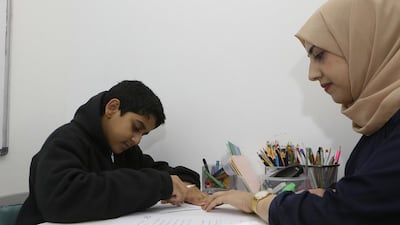The expected closure of the non-profit Taleem Centre for Training and Skills Development in Abu Dhabi highlights the relative lack of support for students with learning difficulties. This affects the education sector as a whole and the success of many of these children. As The National reported yesterday, the centre, which opened in 2014 and supported more than 1,000 children, is struggling to survive due to lack of funds.
While these centres are needed and must be supported, the wider issue is the ability of our education system to accommodate these children, most of whom have been turned away or expelled from other schools because of their learning difficulties.
Ten per cent of UAE pupils have learning difficulties, according to Shereen Jassem, founder of Taleem. When it comes to dyslexia, those who suffer from the disorder are more than capable of learning to read and write when given the appropriate intervention and support from their teachers.
In simple terms, these children are able to learn with the right guidance. Many gifted thinkers were also dyslexic – it has been claimed, for instance, that Albert Einstein, Leonardo da Vinci and Thomas Edison were dyslexic. With structured intervention, dyslexic pupils can and do succeed. The major challenge is breaking down the stigma that insists that dyslexia is a hurdle that can never be overcome.
The first step is to build awareness about the disorder across the community and particularly in our education system. School staff must understand what dyslexia is and how to spot it in a student. The second step is to train teachers on how to deal with dyslexic students. This can be as simple as not requiring them to read aloud (unless they volunteer or have had the opportunity to practise), providing them with notes about lectures ahead of time, removing time limits from testing and other timed situations, and grading written assignments based on content only.
Dyslexic students should also be given more opportunities to succeed. For example, if a student who struggles in reading and writing is better at science or art, teachers can motivate them by showcasing their talents in front of their peers.
Only when dyslexic students are no longer branded as “trouble makers” or, worse still, “stupid” and are fully integrated into the education system will the stigma have been finally removed.

